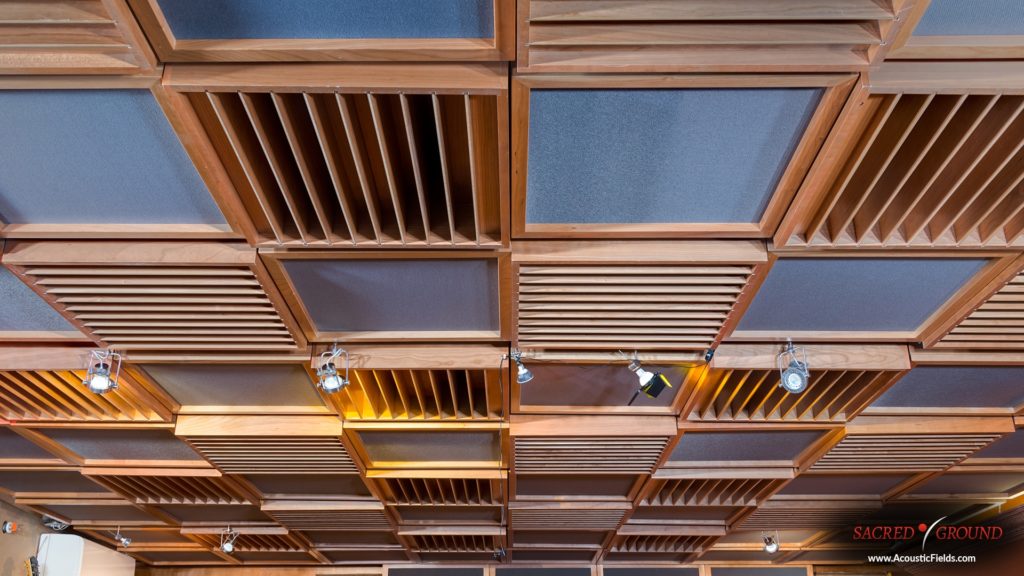
Acoustic ceiling panels come in two main forms. We have sound absorption acoustic ceiling panels and we have sound diffusion ceiling panels. Diffusion and absorption are the two types. There are no other types no matter what companies will advertise. Absorption and diffusion acoustic ceiling panels are the two types our current laws of physics have produced. Whether you use absorption or diffusion depends on the usage within your room, the distances involved and the amount of energy the usage will produce, Let’s look at the three sound fields within a room to see what type of acoustic ceiling panels that we will need to obtain the resolution of our rooms. https://www.collinsdictionary.com/us/dictionary/english/reflection
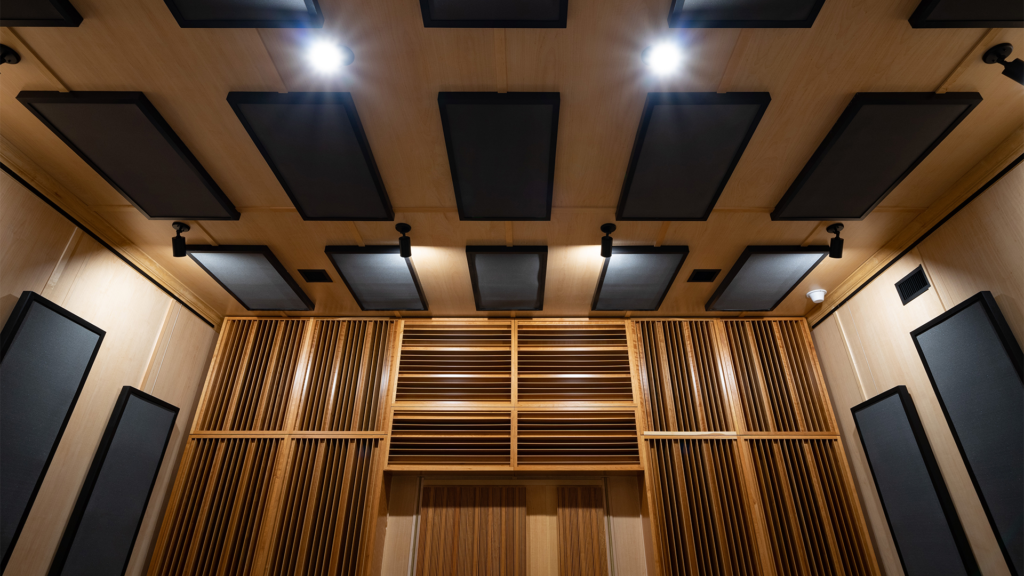
We have two main issues when it comes to achieving resolution within our rooms. We have pressure and reflections. Unwanted pressure that gets trapped between our room walls is labeled axial, tangential, and oblique modal pressure. Pressure is lower frequency energy below 100 hz. that gets trapped between two, four, and six parallel walls. Low frequency pressure that gets trapped between the front and rear walls, the sidewalls, and the floor to ceiling. Low frequency energy that is trapped between two parallel walls is termed axial modes. Unwanted low-frequency pressure that is trapped between four parallel walls is termed tangential. Low-frequency energy that is trapped between six walls is termed oblique. All three modal pressure issues produce audible distortion. https://en.wikipedia.org/wiki/Room_modes
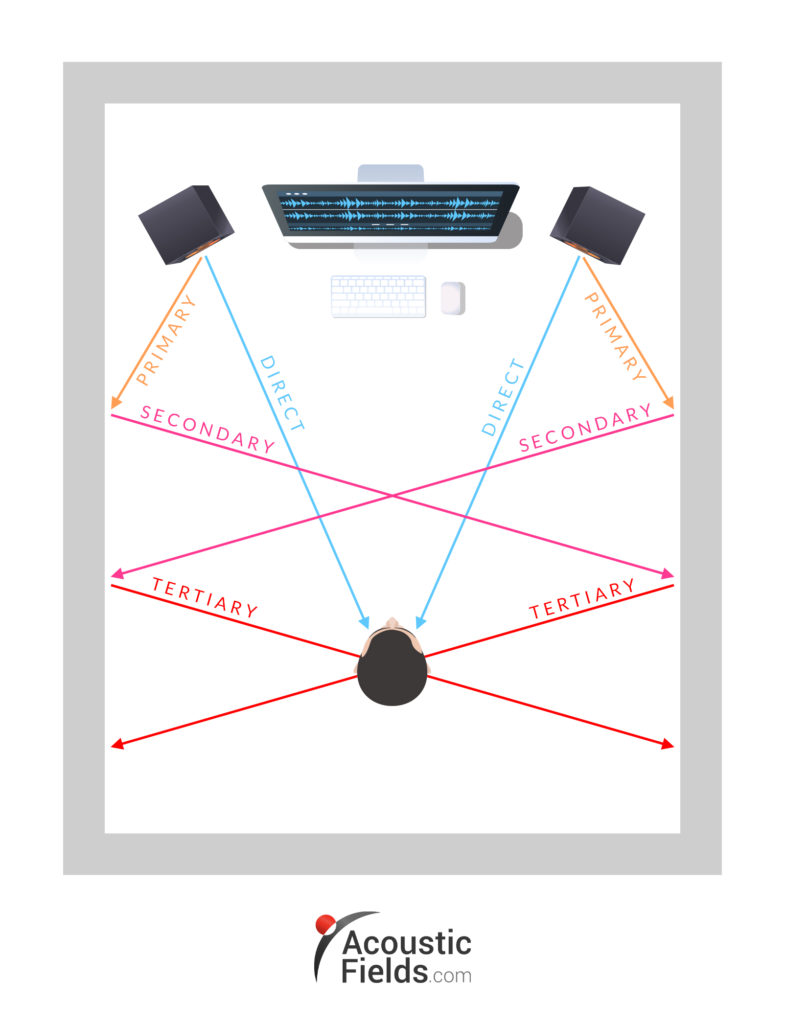
Reflections from our wall surfaces produce distortion when they interfere with the straight line or direct energy from our loudspeakers. The direct energy from our speakers is the purest energy we can hear from our electronics. It is the shortest distance between the speakers and our ears. It is a straight line. It does not include room reflections. Room reflections are room distortion. Let’s look at a two channel room usage for illustration. When we set up two speakers in a room with a listening chair. We form the listening triangle. The speakers are the same distance apart as the distance from the speakers to the listening position. The two speakers and listening positions form an equilateral triangle. Sound travels at a certain speed in our atmosphere and that constant speed is used in our set ups for any two channel rig. https://www.acousticfields.com/product/cpa-ceiling-perforated-absorber/
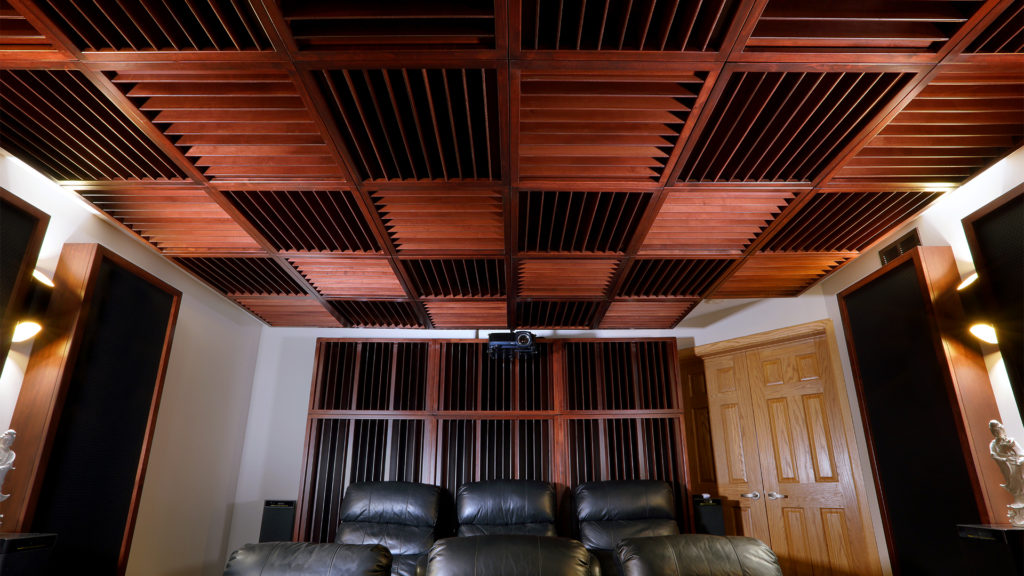
When energy leaves the speakers it strikes the sidewalls, floor, and ceiling. The reflections from these speakers cross over the straight line or direct energy. This produces sonic distortion. We have three main reflections that occur from between the sidewalls. We have a primary reflection that is the first reflection point from the speaker to the sidewall. That primary reflection then travels across the room to the opposite sidewall. This is termed a secondary reflection. The secondary reflection then travels across the room again back to the original wall producing what we term a tertiary reflection. These three reflections are distortion. We do not want to eliminate them but we need to slow their travel times across the room down. https://asa.scitation.org/doi/10.1121/1.2743161
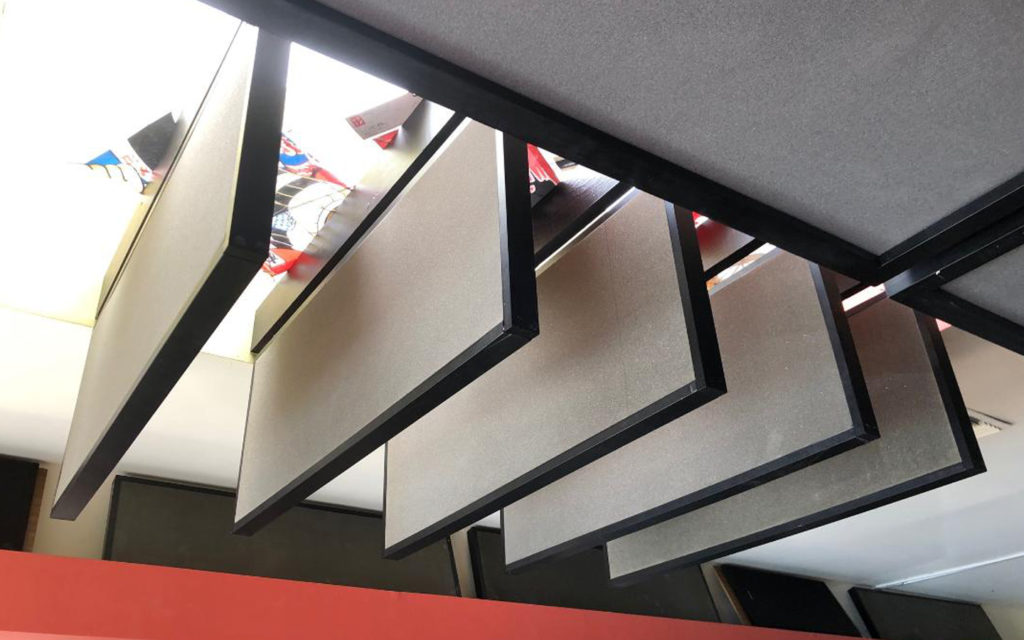
Treating reflections with acoustic ceiling panels is critical along with managing the floor to ceiling unwanted pressures that are trapped between the floor and ceiling. We can accomplish both with acoustic ceiling panels. Both pressure and reflections require different treatment types. Pressure issues require an acoustic ceiling panel that is thicker and more dense. Reflected energy requires acoustic ceiling panels that are smaller in thickness. Most ceiling distances in North America require both pressure and reflection management to minimize the distortion produced by unwanted pressure and reflections. The dimensions of the room along with the room usage will determine what type of acoustic ceiling panel to use. We can assist you with your selection process at Acoustic Fields, www.acousticfields.com, Fill out the information in this link for a free 15 minute analysis. Let’s take a look at your room issues.







